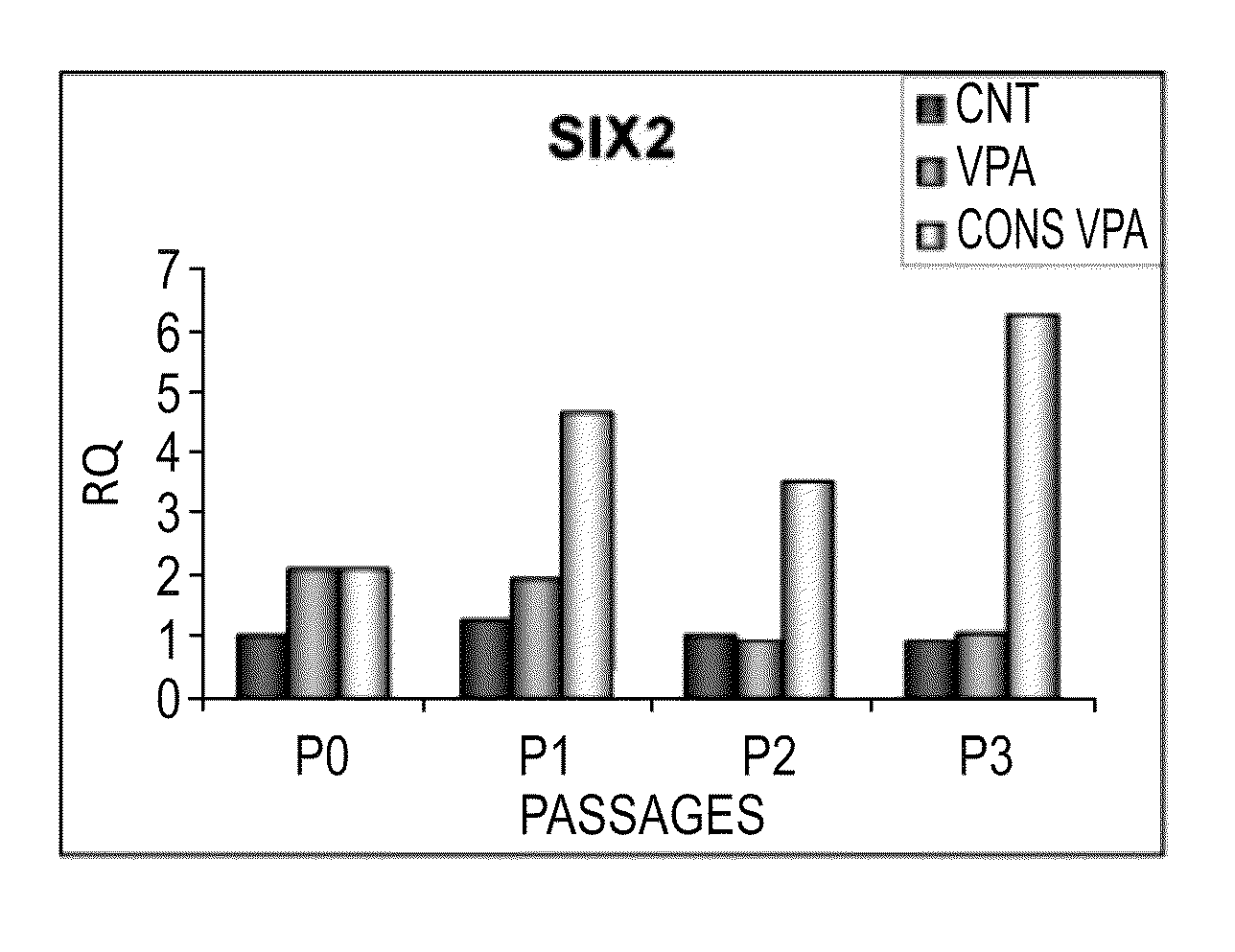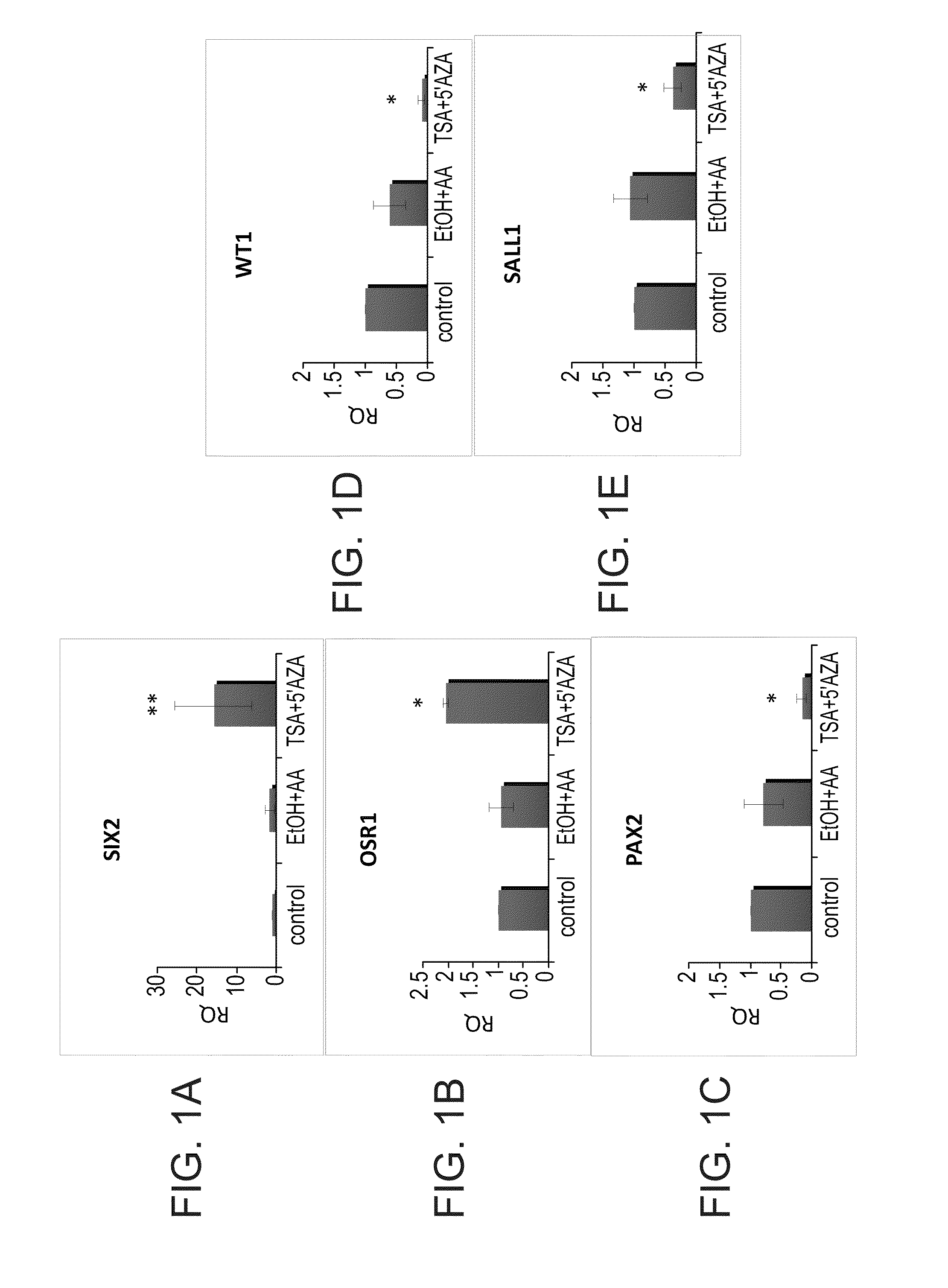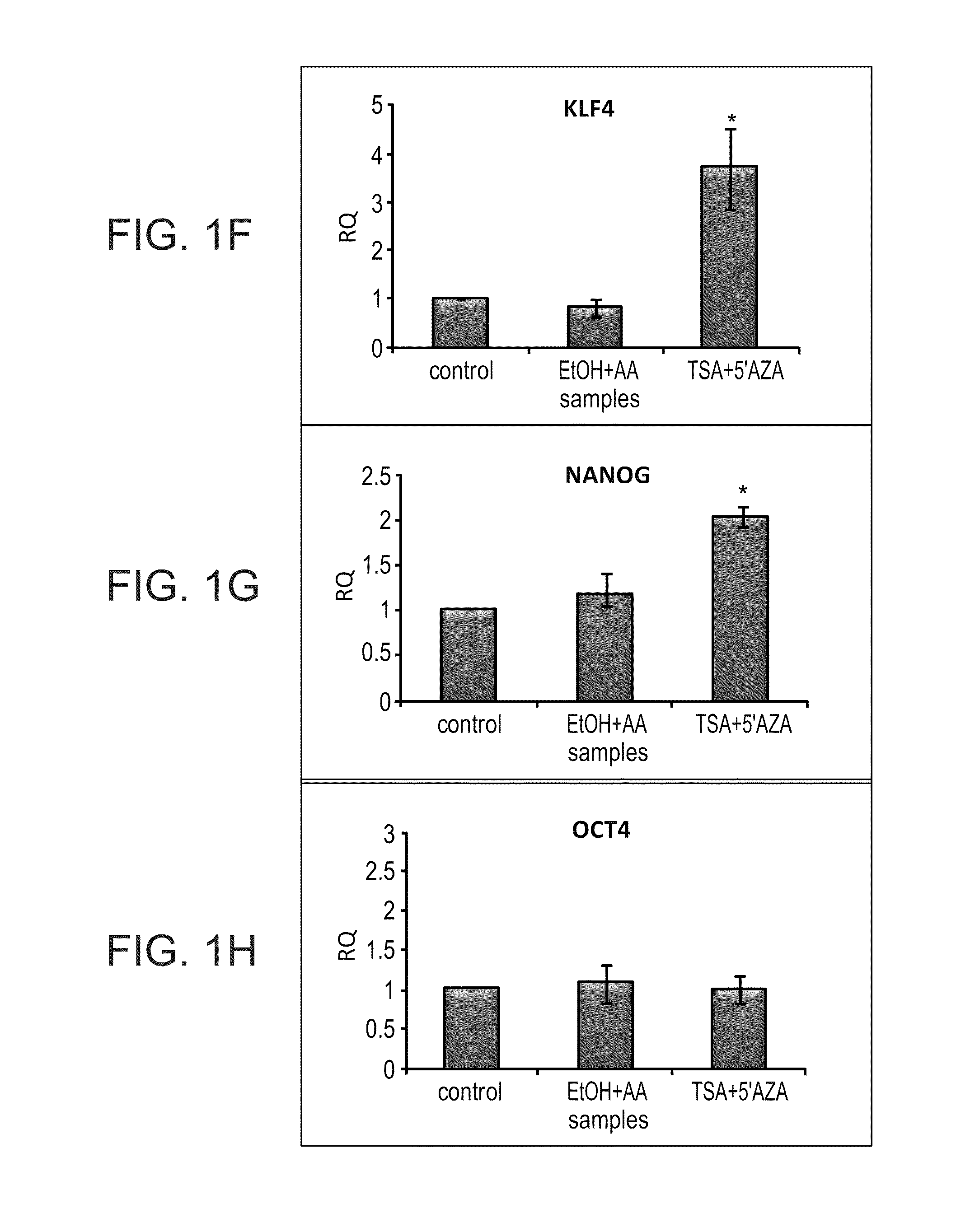Methods of reprogramming renal cells
a technology of reprogramming and renal cells, applied in the field of isolated populations of renal progenitor cells, can solve the problems of extremely high morbidity and mortality rates, loss of specific tasks,
- Summary
- Abstract
- Description
- Claims
- Application Information
AI Technical Summary
Benefits of technology
Problems solved by technology
Method used
Image
Examples
example 1
TSA / AzaC Treatment
[0140]The following experiments were performed in order to determine whether epigenetically repressed genes could be restored by treatment with a combination of the demethylating agent 5-aza-2′-deoxycytidine and the HDAC inhibitor TSA. Thus, human adult kidney cells were initially cultured in the presence or absence of TSA / AzaC for 24 hours. Changes in gene expression in at least three independent samples of human adult kidneys were analyzed after 24-h TSA / AzaC treatment by quantitative RT-PCR. In all cases a robust re-activation pattern was found including Six2 and Osr1 but not Sall1, Wt1 and Pax2 (FIGS. 1A-E). A wide-range of Six2 reinduction levels was noted (five-fold to 25-fold), probably due to primary culture heterogeneity. Several pluripotency / self-renewal genes, among which are Oct4, Nanog and Klf4, have been characterized to be crucial for somatic cell reprogramming. Therefore, the present inventors determined whether TSA / AzaC treatment brings about chang...
example 2
VPA Treatment
[0141]The following experiments were performed in order to determine the effects of VPA, an HDAC inhibitor on kidney cells. Changes in renal progenitor gene levels were assessed initially in adult human kidneys following a 24-hour VPA exposure. In contrast to TSA / AzaC, activation of Six2 was much similar among independent samples and a dose-dependent reinduction of Six2 could be observed in the presence of VPA (five-fold increase) (FIG. 2A). Furthermore, in addition to Six2, both Osr1 and Sall1 were found to be upregulated in a dose-dependent manner, while Pax2 levels were mildly elevated and Wt1 reduced (FIGS. 2A-E). Analysis of the pluripotency genes showed Nanog and Klf4 to be significantly up-regulated in all VPA concentrations, and Oct4 particularly in VPA-2 mM, while Vimentin / E-cadherin analysis demonstrated Vimentin levels to be mostly unchanged while E-cadherin mildly elevated (VPA-2 mM, 4 mM) (FIGS. 2F-J).
[0142]Almost exact findings were noted in human fetal ki...
example 3
Changes in Protein Levels Following VPA Treatment
[0143]Having established that similar to TSA / AzaC, VPA treatment results in activation of specific renal progenitor genes as well as pluripotency genes, but also induces Sall1 and that these changes fluctuate less across human kidney samples, the present inventors analyzed changes at the protein level following exposure to 2 and 4 mM VPA. For western analysis the present inventors concentrated on Six2 protein as it was most substantially induced and it has a major role in specifying the renal stem cell population in the MM. Wt1, which is not induced at the gene level, was concomitantly analyzed. Western blots performed on both human fetal and adult kidney cells 24-h after VPA exposure clearly demonstrated an increment in Six2 protein levels in both types of cells (4 mM) and no changes in Wt1, both following their gene expression pattern (FIG. 3). Because certain surface markers characterize renal progenitor cells, FACS analysis of hum...
PUM
 Login to View More
Login to View More Abstract
Description
Claims
Application Information
 Login to View More
Login to View More - R&D
- Intellectual Property
- Life Sciences
- Materials
- Tech Scout
- Unparalleled Data Quality
- Higher Quality Content
- 60% Fewer Hallucinations
Browse by: Latest US Patents, China's latest patents, Technical Efficacy Thesaurus, Application Domain, Technology Topic, Popular Technical Reports.
© 2025 PatSnap. All rights reserved.Legal|Privacy policy|Modern Slavery Act Transparency Statement|Sitemap|About US| Contact US: help@patsnap.com



